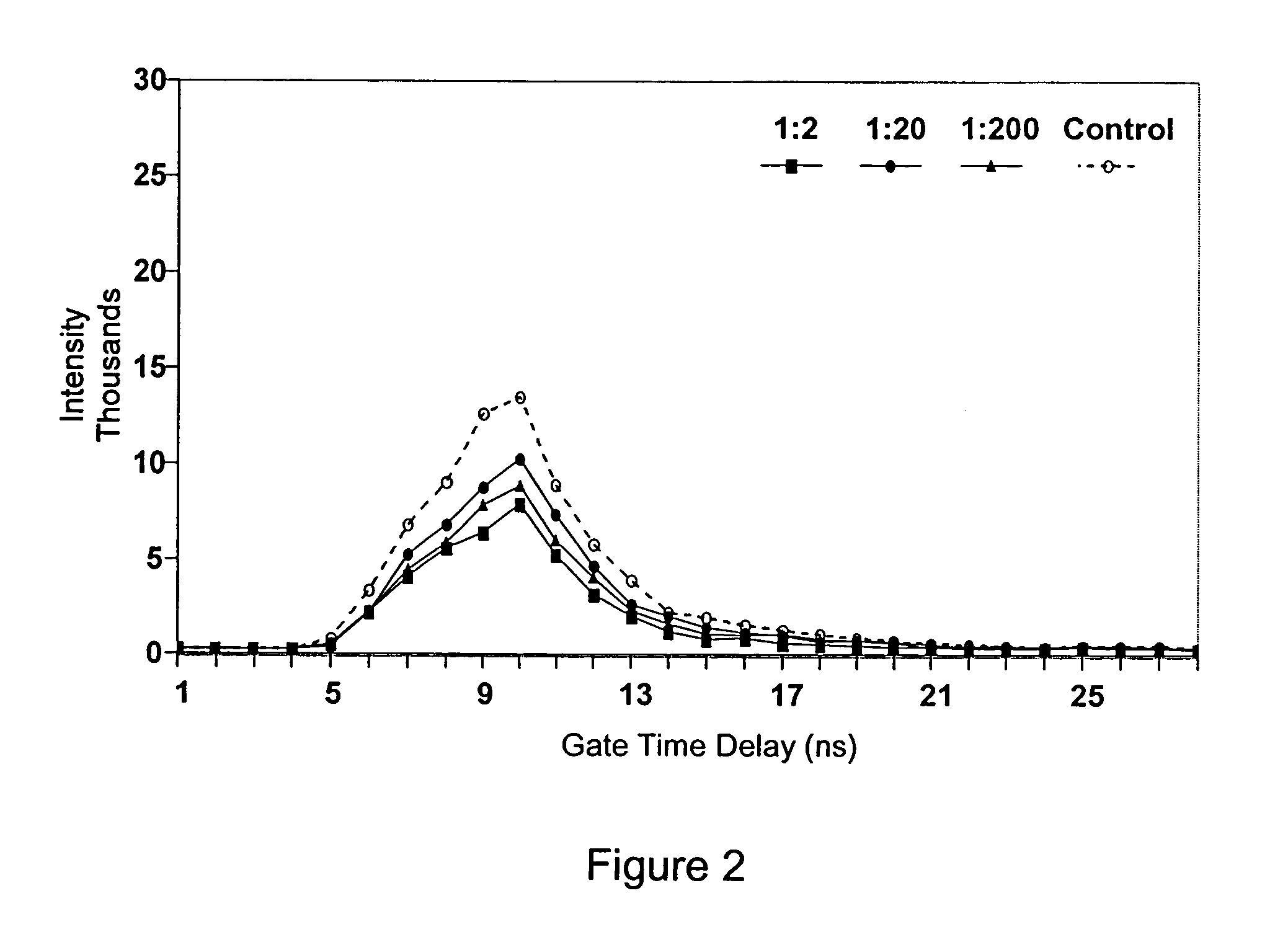Use of nanosecond scale, time-resolved, imaging to differentiate contemporaneous fluorescence responses from multiple substances
- Summary
- Abstract
- Description
- Claims
- Application Information
AI Technical Summary
Benefits of technology
Problems solved by technology
Method used
Image
Examples
example 1
1. Introduction
[0032]This example describes the method of using a laser-induced fluorescence imaging system for detecting fecal contamination on apples. We have previously shown that the maximal fluorescence yield from feces is obtained using an excitation wavelength around 417 nm.16 In this study, the UV pulsed-laser was replaced by a pulsed-laser with an output wavelength of 417 nm. In addition, we hypothesized that consideration of time-dependent differences in fluorescence responses of areas with or without feces treatment might allow for improved detection of contaminated apples. To test this possibility, an intensified camera with a gate-width of two ns was used to image artificially contaminated apples sequentially by time.
2. Materials and Methods
[0033]Serial dilutions of dairy feces were applied to Red Delicious and Golden Delicious apples. Contamination sites were detected by taking advantage of differences between fluorescence responses of apple surfaces and of feces on ap...
PUM
 Login to View More
Login to View More Abstract
Description
Claims
Application Information
 Login to View More
Login to View More - R&D
- Intellectual Property
- Life Sciences
- Materials
- Tech Scout
- Unparalleled Data Quality
- Higher Quality Content
- 60% Fewer Hallucinations
Browse by: Latest US Patents, China's latest patents, Technical Efficacy Thesaurus, Application Domain, Technology Topic, Popular Technical Reports.
© 2025 PatSnap. All rights reserved.Legal|Privacy policy|Modern Slavery Act Transparency Statement|Sitemap|About US| Contact US: help@patsnap.com


